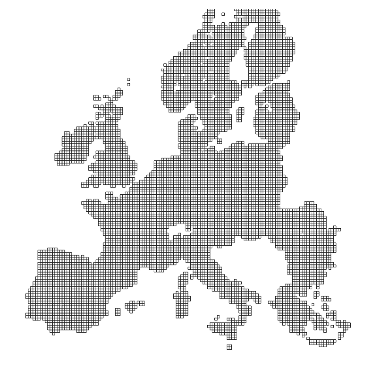In recent months we have set up a working group to identify protocols for the modelling tasks in SolACE, to collect calibration datasets and to decide on scenarios to be tested. This group will oversee the planning and delivery of modelling tasks towards the end of the project.
The primary objective of the modelling work is to use existing datasets and those generated in SolACE to simulate GxExM (Genotype x Environment x Management) strategies across the EU. Several aspects of the simulations need to be defined to achieve this, such as calibrating and evaluating the model with field-data, evaluation of the model at the gridded level and then running the model for baseline and projected climate.
Four steps will be used to calibrate and evaluate the models within SolACE WP3 and WP1:
1. Calibrate the crop cultivars tested with the existing in SolACE WP3 using the pre-existing Bread wheat project dataset.
2. Evaluate the novel models generated with datasets generated in SolACE (evaluation for GxExM).
3. Extrapolate to representative points on grid cells selected based on a preliminary study by INRAE-LEPSE and experimental sites from the published dataset ensemble in WP1.
4. Simulate each grid using the baseline and projected climate scenarios.
Once the models have been calibrated and evaluated, they can be run to identify the impact and sensitivity of each crop to climate. There will be a set of initial conditions like soil, water and nitrogen contents specified prior to sowing that define the boundary conditions of the system. The crop models will simulate these conditions.
Several GxExM strategies can then be tested with the novel SolACE crop models. However, to restrict the scenarios to the ones that will be of value to the stakeholders, the programme of work will engage with the farmers’ networks organised by SolACE WP5. There is now an opportunity for all our stakeholders to engage with the modelling work and suggest the scenarios we test. Let us know what future climate variation, management strategies and crop genotype traits you are interested in learning more about, by contacting Tim George or anyone of your SolACE contacts to make suggestions to be considered.
With your help, we believe we can create a unique understanding of how changes in Genotypes, Environment and Management will affect Agricultural Sustainability across Europe under a range of environmental change scenarios.

 tap and then scroll down to the Add to Home Screen command.
tap and then scroll down to the Add to Home Screen command.